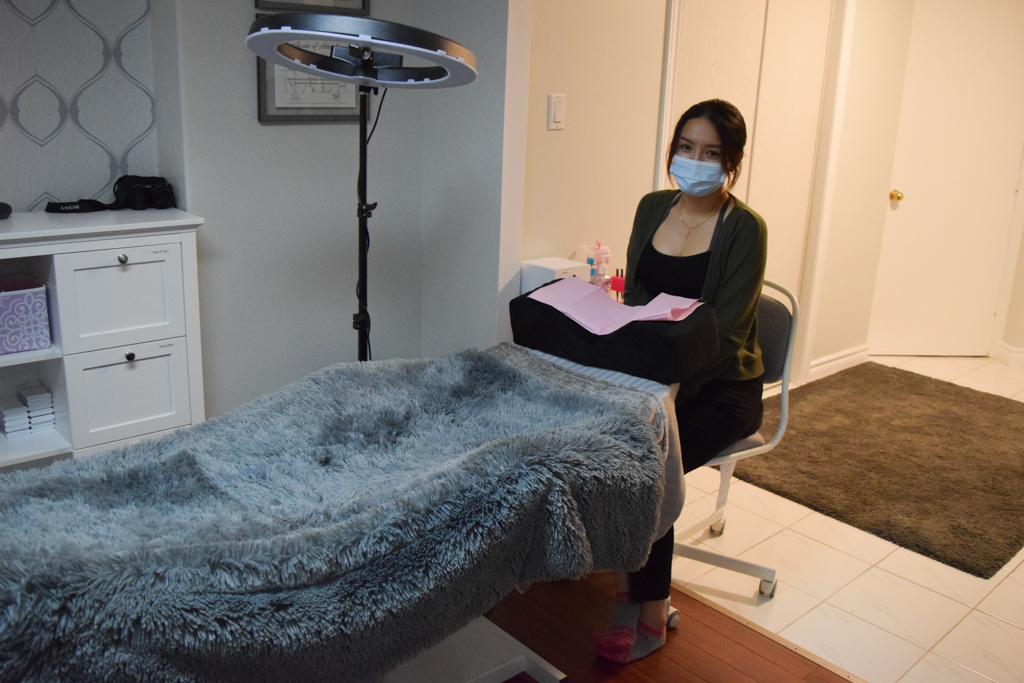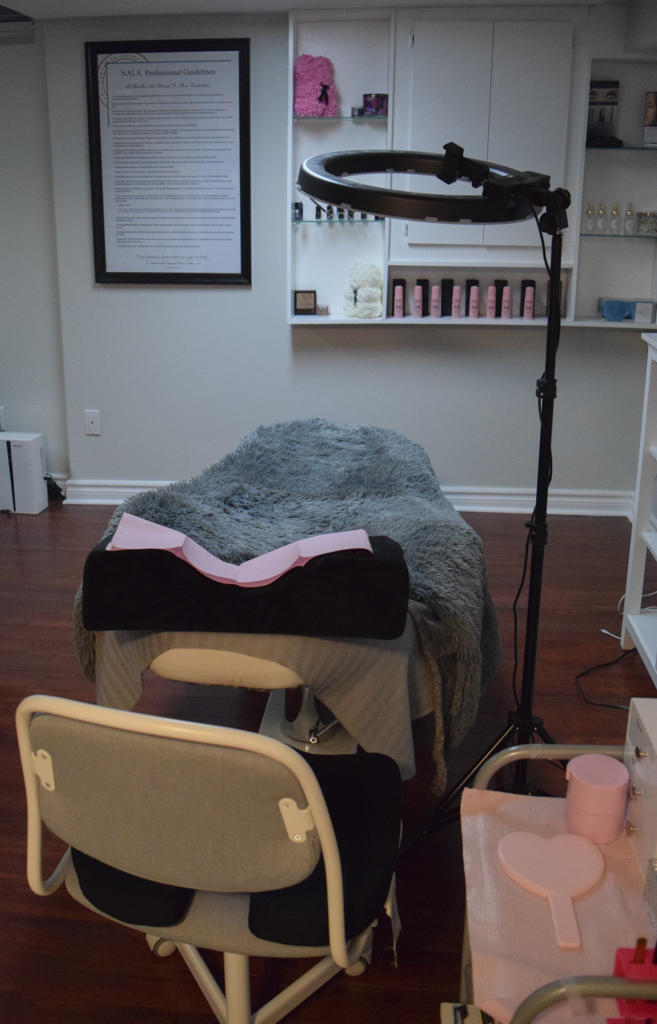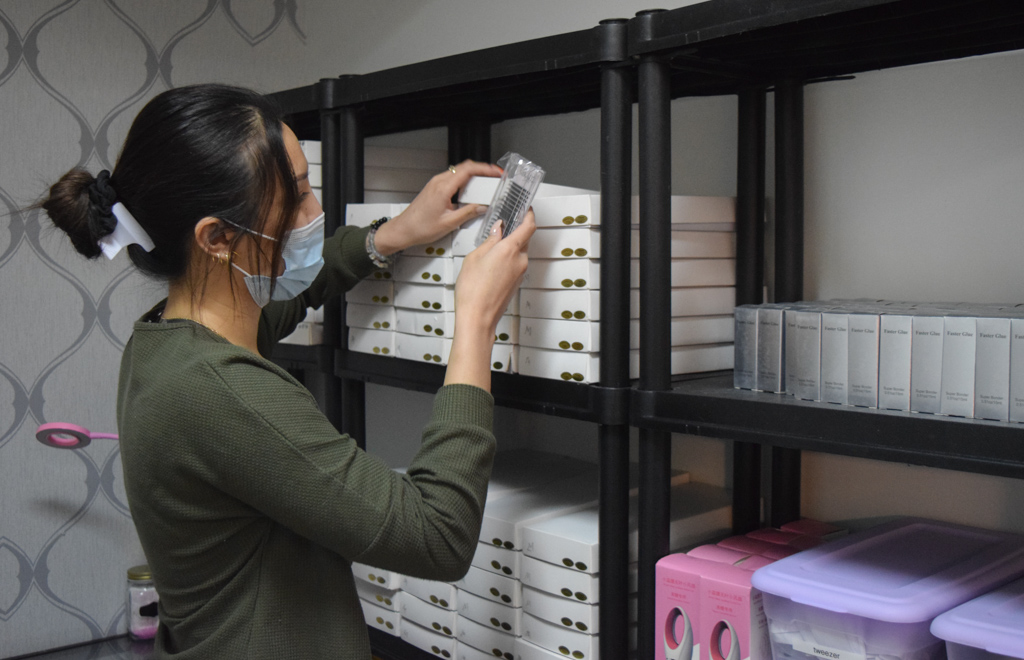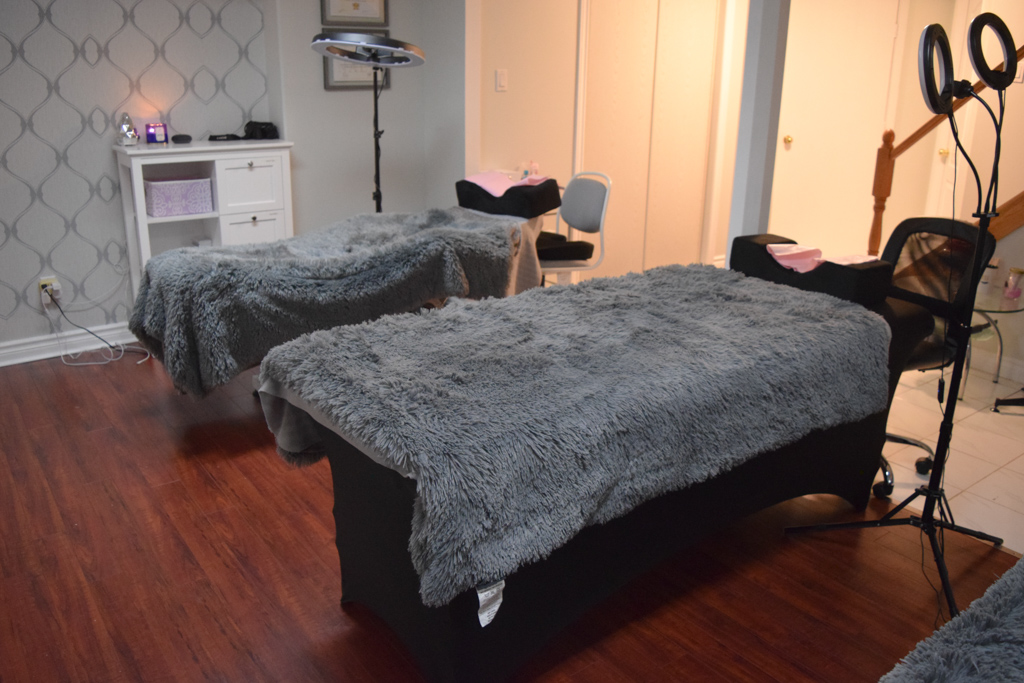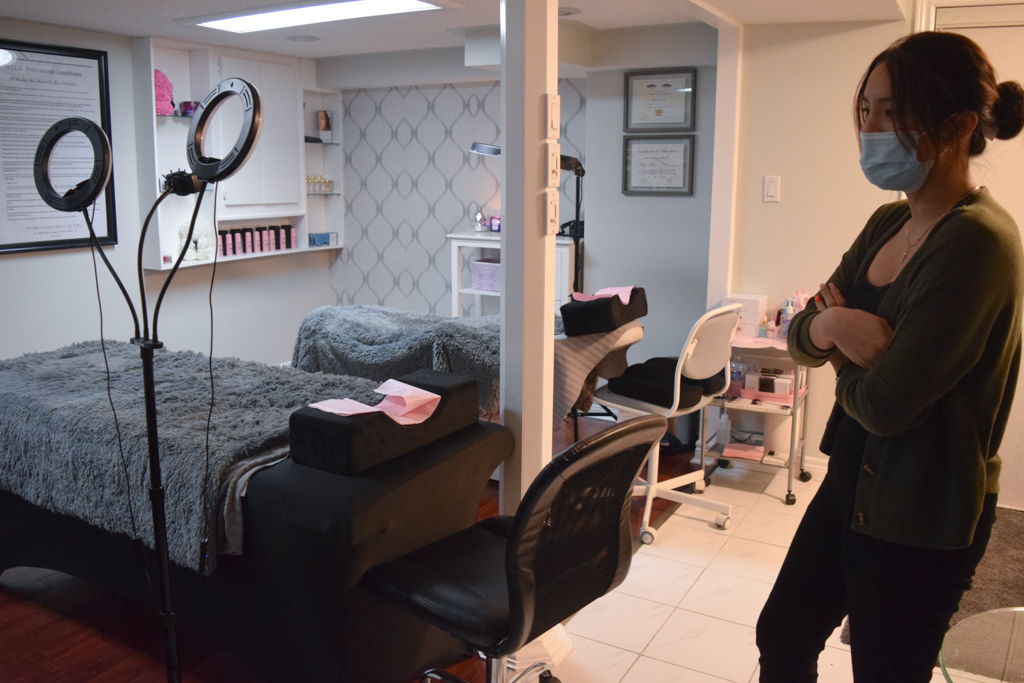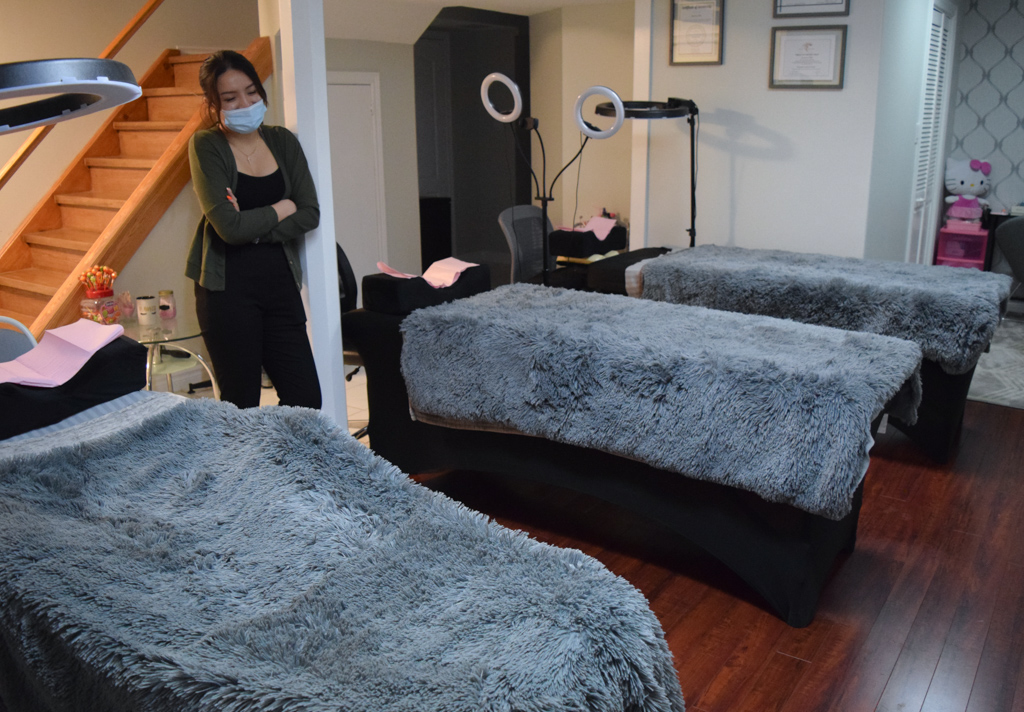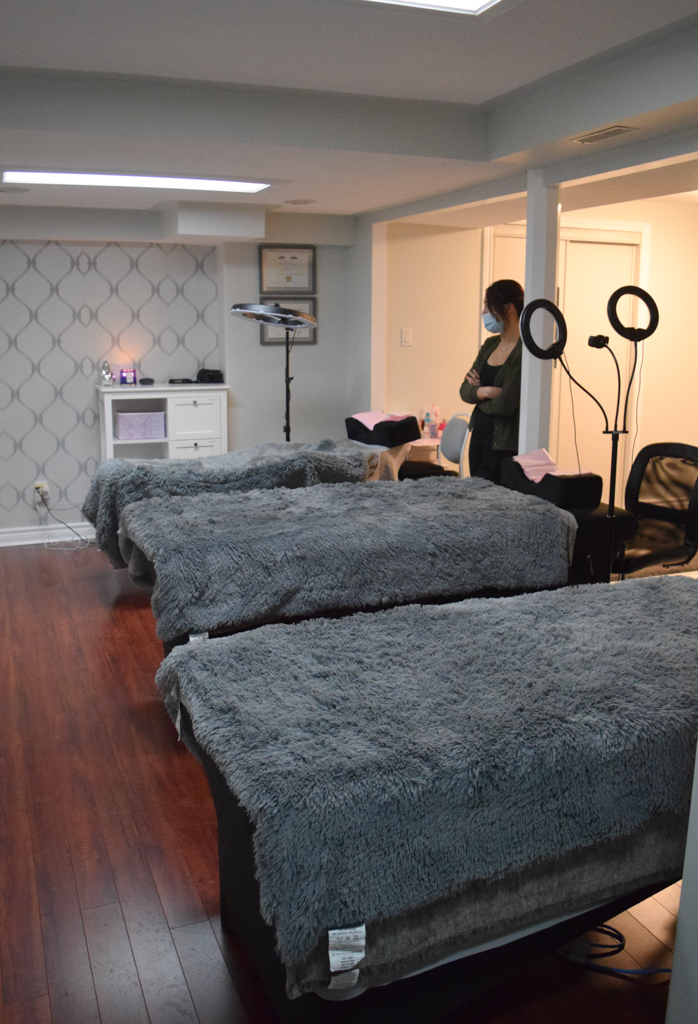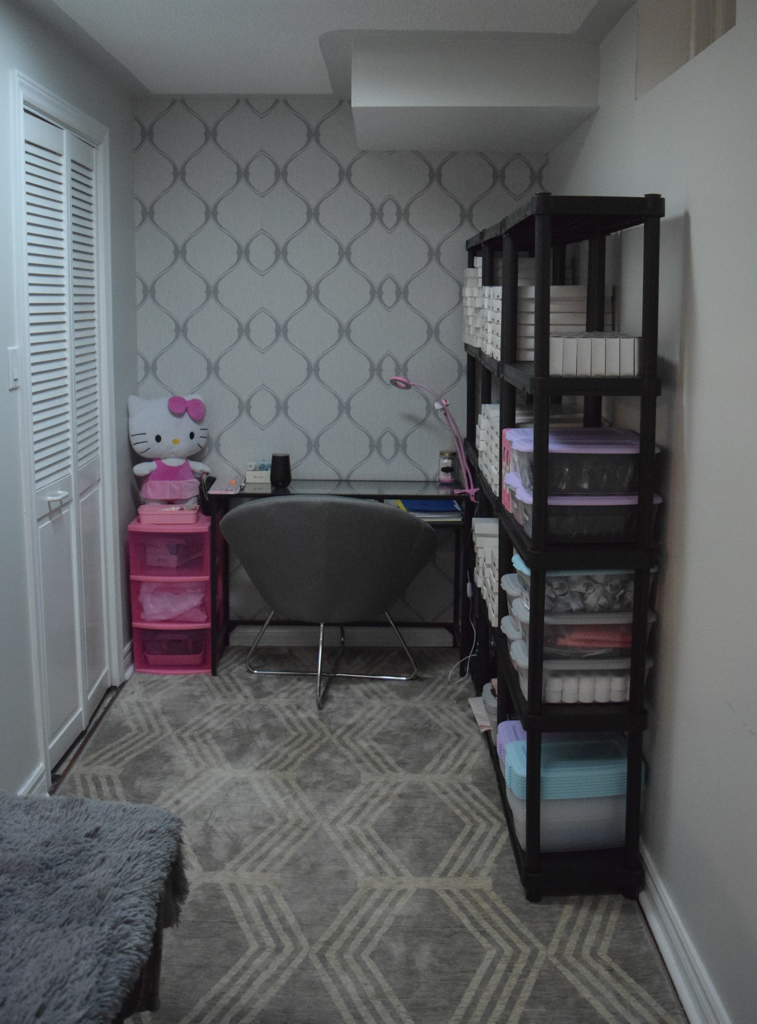By Cassandra Argao
Jesseca ‘Jess’ Bui sits in her office facing tall windows as she reminisces about the month long eyelash extension course she first took in Vietnam.
“It was horrible. I look back and I think ‘what the hell were they teaching me?’ The standards were so low, you could put three lashes on someone’s eye and call that a set.”
This differs from what Bui practices and teaches in her own courses now. The average classic set places around 50 lashes per eye.
Bui was visiting family in Vietnam one summer and took a cheap course as a way to pass the time. That month, although ‘horrible’, planted a love for lashing and made her promptly take a more updated course upon her return to Canada. Now, she makes it a habit to attend at least one lash course a year to keep her skills up to date.
Bui is now the owner of Mikado Lashes, an independent business she started on Instagram after graduating with a retail operations degree and quitting a banking job.
She started lashing the occasional client on a part-time basis during school, but eventually decided to invest her time and money into making her side hustle a full-time gig. Mikado now offers lashing, training courses and a product line.
Over the past few years, a surge of service-based businesses have popped up all over Instagram. Entrepreneurs will braid your hair, paint your nails, or most popularly, give you a set of lashes.
Many lash techs attribute this popularity to the lack of physical lash salons. Unlike a hair salon or nail salon, an Instagram lash tech is one of the few ways to get a set of eyelashes.
Searching for ‘Mississauga lash tech’ on Instagram brings up hundreds of results. An Instagram account and a living room is all a lash tech needs to grow a clientele.
Bui has around 5,800 followers and a stream of returning clients.
Getting certified and starting to lash clients isn’t cheap. Bui recalls having to ask her parents for financial support to get started, considering the cost of training and equipment starts at a thousand dollars.
For many, however, the payoff is almost immediate. In a busy month, Bui can earn up to $15,000.
This payout, along with her love for lashes, is what attracted Vanessa Dinh to lashing. Dinh, an ex-retail employee, founded Lashific, which has just over 700 followers, and is currently working towards a degree in legal studies and sociology.
Dinh says lashing is only a part-time gig to help pay for school and save for her future. She routinely makes around $1,000 a month — almost double the pay at her former retail job. But her scoliosis and school endeavours will eventually cut her lash career short.
Sitting hunched over a lash bed for hours at a time is physically exhausting, Dinh says.
“It’s really tiring. I have really bad back pain. But it’s something that I like and I do because you can make a lot of money. You can’t make money off of something that you don’t want to do,” she says.
Bui and Dinh both transitioned from hourly wage jobs to lashing. This story is common among many other lash techs.
Elora Do got her first job at 16 working in retail. She now owns Dime Lashes and has over 9,000 followers.
“I realized that maybe business was something for me. I really did love retail, but then I realized if I was working so hard and making so much money for another company, I could do it for myself,” Do said.
Gerrika Carolasan, owner of Carolashed left a full-time career of four years in early childhood education to pursue lashing and earns more money as a full-time lash tech than she ever did as a salaried teacher.
“I tried teaching, and of course, I loved it,” Carolasan said. “But I just felt like… there was more that I could have done, and enjoyed more. And I’ve always been passionate about the beauty industry.”
Dr. Robert Clapperton, a professor at Ryerson and an entrepreneur says platforms like Instagram have made turning hobbies into careers easier than ever before.
“Imagine you wanted to start a retail business or a hair braiding business in 1995. You needed retail space, you needed a place to put your sign up to say, ‘This is your business.’” he says. “Now, it’s a matter of taking a picture and putting it on Instagram, and it’s immediately there. It’s the real estate of where your business sits, just now it’s digital, and is completely accessible and open to anybody that wants to stick something up there.”
This digital real estate allows lash techs to reap the profits of their business without dealing with rent or landlords.
Do went to university for political science to satisfy her parents, then ultimately made the decision to be a full-time lash tech. Given the choice, she says she would have skipped the degree.
Instagram is not only a space for digital real estate, but also for building professional relationships.
Bui spends more time alone in front of her computer sorting out the logistics of her business than actually lashing clients, making Instagram the only place for workplace interactions. After a hard-to-please client or an equipment malfunction, the app provides a vault for gossip and advice via group chats and private stories.
“It’s a really lonely industry,” she says. “I think people forget that.”
In 2020, the community helped each other through COVID-19. Together, they figured out which guidelines to follow and how to safely open.
In the pandemic, Mikado Lashes looks more like a doctor’s office than a salon. A COVID-19 safety and sanitation certificate hangs on the wall. Crinkly plastic covers the three beds and is thrown out after every client. The lash trays hold black Mikado tweezers with plastic wrapped handles that are sterilized multiple times a day with PREempt, a disinfectant made for salons. Bui wipes down anything a client might touch.
When a masked and screened client sits down, they don a dental bib.
However costly or time consuming, these extra safety measures only briefly halted Bui’s plans. She modified her lash training course and developed a product line to diversify her income. Bui even trained a new junior tech, who goes by Mr. Lash on Instagram and started working for her in February.
Once the pandemic ends, Bui says she has the loan and down payment ready for a salon. After that, she dreams of giving a TED talk about growing an independent business on Instagram that is financially successful and aesthetically pleasing.

